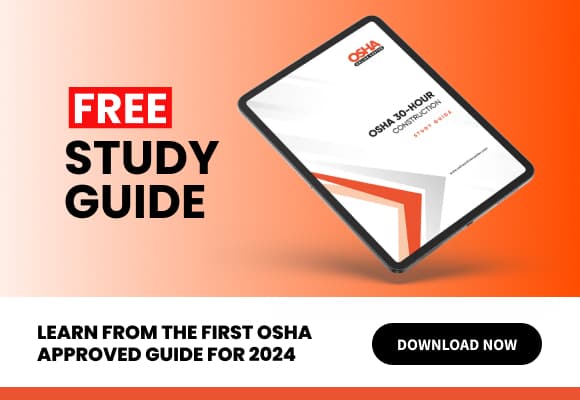Since it is mandated by the Federal Occupational Safety and Health Administration (OSHA) for employers to oblige with the regulations established to make sure the workers' rights are not violated in any way that can lead to the enforcement of heavy penalties and fines, OSHA has designed four primary stages to scrutinize a company's integrity with the Standards by executing an efficient inspection.
The Four Primary Stages of an OSHA Inspection are listed below that are further discussed in detail:
- The Credential Presentation.
- The Opening Conference.
- The Walkaround.
- The Closing Conference.
What Brings About A Safety Inspection/Survey In The Workplace?
In order to keep a check, OSHA-approved compliance officers are tasked to execute an inspection in the workplace, which can be random or aggravated yearly.
Many Reasons can Prompt an OSHA Inspection, such as:
- When a worker files a complaint against occupational safety violations in the workplace;
- When there is a likelihood of the presence of potential/unpredictable site hazards
- When a severe injury results in a fatality is recorded.
The category of inspections that will be conducted by a compliance officer pertinent to its trigger is given below:
-
Employee Complaint Inspection: Employees can submit a report regarding any potential occupational health or site hazard.
-
Imminent Danger Inspection: This inspection takes preference over the three inspection types. When OSHA has enough evidence of an imminent hazard that could incite death or severe injury to workers, an urgent inspection will be executed within 24 hours.
-
Programmed Inspection: OSHA orchestrates random surveys in highlighted industrial facilities that are prone to potential hazards since there's an involvement of dangerous activities to lessen causalities in the workplace.
-
Fatality And Accident Inspection: In case of a recorded occupational fatality, a compliance officer will survey to settle whether the provocation of the accident was the employer's liability.
Let's Discuss The Four Primary OSHA Inspection Stages In Depth!
Once an occurrence or complaint has been officially filed, preparation for an OSHA-approved inspection can be initiated.
Stage 1: Presenting OSHA Credentials:
Upon reaching the accident site, the compliance officer will immediately determine the person in control and put forward their OSHA credentials. The employer has a legal permit to demand an inspection warrant before the inspection upon the officer's arrival.
Stage 2: The Opening Conference:
The compliance officer's next crucial step is communicating with the authorized management, the workers, and spokespersons. The opening discussion is carried out and is typically a small presentation to elaborate on what provoked an OSHA workplace inspection, the reason for the survey, the extent of the inspection, and the walkaround strategies. In addition, the officer customarily requests the Summary of Occupation Injuries and Illnesses and the organization's hazard examination, so employers must ensure they're present when asked for.
Stage 3: Walkaround Procedures:
A Walkaround survey will be conducted throughout the company's work locations to recognize any workplace hazards, particularly those about the reported complaint. In addition, the observations are recorded via photographs and videos to maintain proof. Furthermore, specific tools are employed to administer and calculate noise exposure, air contamination such as dust particles and toxic fumes, and other potentially hazardous substances. When deemed necessary, the compliance officer may conduct private interviews that are to be voluntarily complied with by all workers and their representatives in the workplace. In case of agreeing to be interviewed, they are allowed to dictate hazardous sites, explain any incident that arose from the site hazards in the past, and report other complaints from workers they know about.
Stage 4: Closing Conference:
The final step will be when the compliance officer reveals the violation of OSHA standards they noticed and provide appropriate recommendations to prevent or control the observed site hazards. To conclude, the conference can be a joint conference, or the official may communicate to the employer and workers separately. Subsequently, the compliance officer will communicate with the workers and their representatives. On the other hand, any outcome will be included when putting forward the observations to the employer, which will imply the proposed changes to the employer and declare the duration in which they have to amend the violations observed. The organization can plea for a bargain later to reduce the issued penalties.
Monitoring Inspections
To ensure whether the employer has rectified the violations as indicated in the suggested alterations, a monitoring inspection, a monitoring inspection, or a research investigation is usually conducted. If the employer does not meet the demands to reduce the hazards, it will be severely penalized for "failure to abate."
Moreover, hiring a compliance specialist to ensure OSHA compliance is met successfully and prevent further penalties or fines could be advantageous.
Final Thoughts
A corporation may be subject to substantial fines, penalties, and raised insurance premiums if a compliance officer determines that it has violated an OSHA requirement. Knowing what to expect during an inspection is, therefore, helpful.
An OSHA workplace inspection goes through four primary phases, including:
- The presentation of credentials
- The opening meeting
- The tour and the adjournment meeting
The officer specifies the fines and the time frame for the employer to make corrections. More severe penalties will be assessed if you don't comply. By doing a hazard analysis and putting the required safeguards in place to maintain their employees' occupational safety and health, employers can reduce the likelihood that they will violate OSHA regulations.


